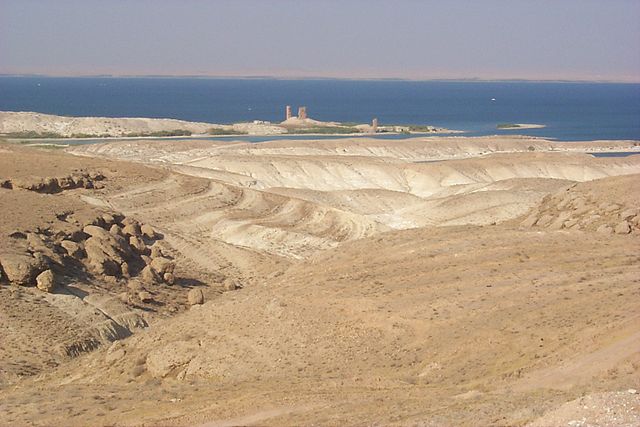Abu Kamil Nasr ibn Salih ibn Mirdas, also known by his laqab of Shibl al-Dawla, was the second Mirdasid emir of Aleppo, ruling between May 1029 until his death. He was the eldest son of Salih ibn Mirdas, founder of the Mirdasid dynasty. Nasr fought alongside his father in the Battle of al-Uqhuwana near Tiberias in 1029, where Salih was killed by a Fatimid army led by Anushtakin al-Dizbari. Afterward, Nasr ruled the emirate jointly with his brother Thimal. The young emirs soon after faced a large-scale Byzantine offensive led by Emperor Romanos III. Commanding a much smaller force of Bedouin horsemen, Nasr routed the Byzantines at the Battle of Azaz in 1030.
A silver dirham of Nasr ibn Salih, minted in Aleppo in 1033/34
The Battle of Azaz, miniature from the Madrid Skylitzes
Nasr seized the Aleppo Citadel from his brother Thimal in 1030, and became sole ruler of Aleppo and made it his seat of power. The present citadel (pictured) dates to the 13th century
Abu Ali Salih ibn Mirdas, also known by his laqab Asad al-Dawla, was the founder of the Mirdasid dynasty and emir of Aleppo from 1025 until his death in May 1029. At its peak, his emirate (principality) encompassed much of the western Jazira, northern Syria and several central Syrian towns. With occasional interruption, Salih's descendants ruled Aleppo for the next five decades.
Gold dinar minted in Aleppo in the name of Salih ibn Mirdas and recognizing the suzerainty of Fatimid caliph az-Zahir, 1028/29 CE
Salih was first mentioned in the historical record when he captured the fortress of al-Rahba (pictured in 2005) in 1008. The fortress as depicted in the photograph dates to the 12th century.
Ruins of Balis (pictured in 2005) on the Euphrates River. Between 1009 and 1022, Salih laid the foundations of his emirate by capturing a string of fortress towns along the Euphrates, including Balis, Manbij, al-Rahba, Raqqa and al-Rafiqah
General view of old Aleppo (foreground) and its citadel (background), 2008. Aleppo was the capital of Salih's Mirdasid emirate. The citadel as depicted in the photograph dates to the 12th century.







